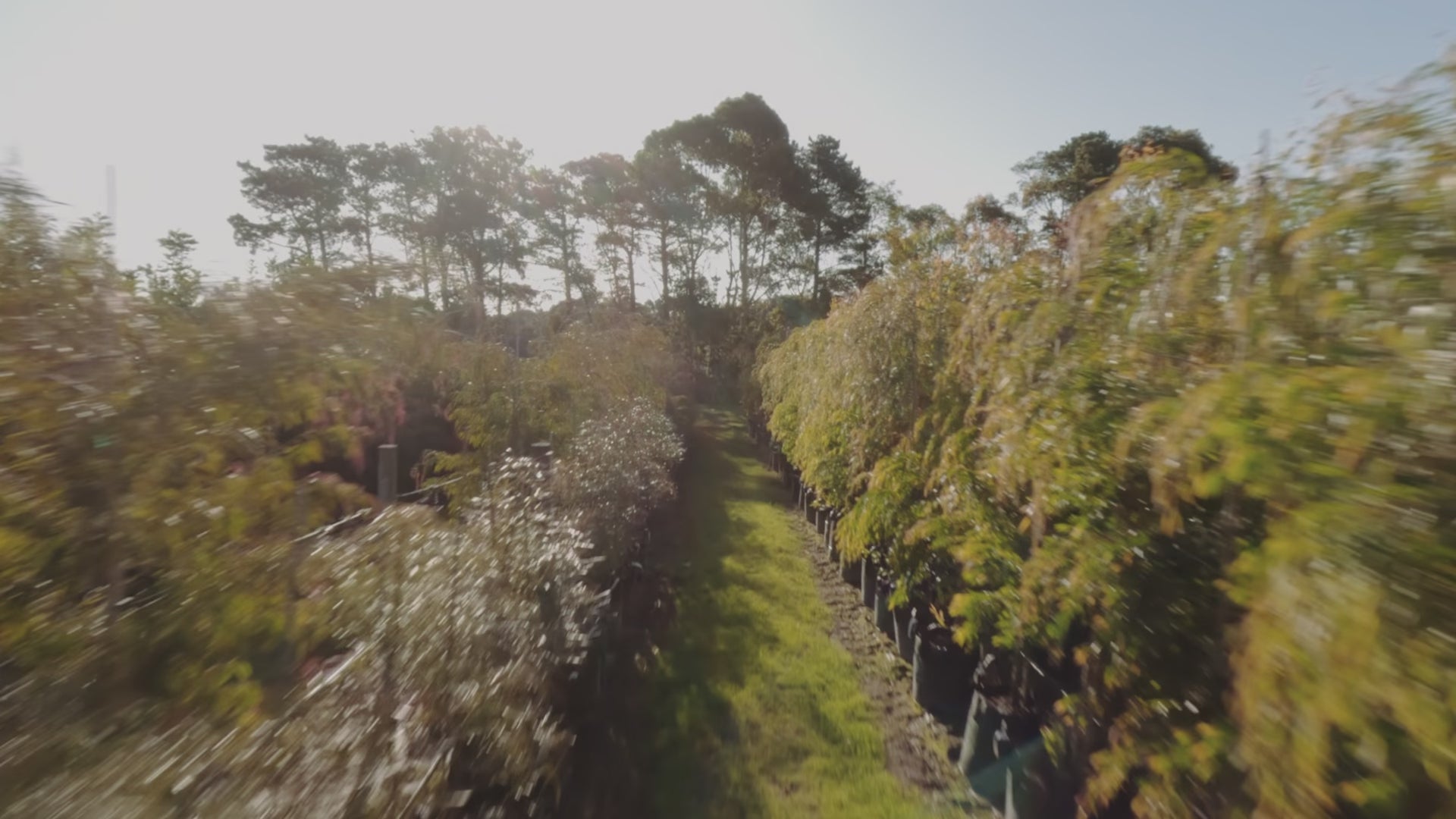Xanthorrhoea - Black Boy Tree
Xanthorrhoea - Black Boy Tree
1000 in stock
Couldn't load pickup availability
Current Stock Height Guides
Current Stock Height Guides
Trade Customers
Trade Customers
We supply advanced trees to landscapers, developers, architects, and councils Australia-wide. Trade clients receive fast quotes, expert advice, and access to premium stock with reliable freight.
Share this product
About Xanthorrhoea - Black Boy Tree
Xanthorrhoea species, commonly known as Grass Trees or Black Boy Tree, look excellent when used as striking focal points in native and xeriscape gardens. Their thick, woody trunks topped with dense tufts of grass-like foliage add a sculptural, architectural element that commands attention. The dramatic flower spikes, reaching up to 2 meters, attract nectar-feeding birds and insects, enhancing garden biodiversity.
These evergreen plants tolerate poor soils, drought, and fire, thriving in full sun with minimal maintenance once established. They are perfect for low-water gardens and rockeries. For added landscape impact, Grass Trees can be underplanted with low-growing native shrubs or succulents, creating a layered effect and varied texture that complements their bold form.
Key Information to Know

Evergreen / Deciduous
Xanthorrhoea - Black Boy Tree is an Evergreen (foliage year round) Tree

Mature Height & Width
Mature Height: 1m - 6m Approximately (variable depending on species, very slow-growing; this refers to trunk height)
Mature Width: 1 m – 3 m (leaf crown spread)
Xanthorrhoea - Black Boy Tree is expected to grow Approx. 1 – 3 cm/year (Very Slow).

Frost Tolerance
Is Xanthorrhoea - Black Boy Tree frost tolerant?
Xanthorrhoea - Black Boy Tree is Frost Hardy – Survives heavy and frequent frost without damage.

Flowering Information
Xanthorrhoea produces dramatic, upright flowering spikes covered in thousands of small cream-white flowers rich in nectar. These blooms often follow fire, seasonal changes or periods of stress, creating a striking architectural feature that rises well above the foliage.

Native Information
Is Xanthorrhoea - Black Boy Tree an Australian Native? Yes
Xanthorrhoea - Black Boy Tree is Native to Australia – different species occur across much of the continent. They are commonly found in heathlands, open forests, and rocky slopes.

Wildlife Value
Its tall flowering spikes produce abundant nectar that attracts native bees, beetles and beneficial insects, while also drawing in nectar-feeding birds such as honeyeaters. The dense skirt of older foliage at the base provides sheltered habitat for small reptiles and ground-dwelling wildlife, supporting a diverse and resilient ecosystem.

Sunlight Information
Xanthorrhoea - Black Boy Tree will thrive best in:

Preffered Soil
Xanthorrhoea performs best in very well-drained sandy or loamy soils with an acidic to neutral pH. It will not tolerate heavy, compacted or waterlogged soils, and these must be avoided or significantly improved with coarse materials to enhance drainage. Keep the soil lightly moist during establishment, then gradually reduce watering as it develops its natural drought resilience. Avoid disturbing the root system at all stages.
Botanical Information

Botanical Information
Botanical Information
Common Name: Grass Tree
Genus: Xanthorrhoea
Botanical Species: Xanthorrhoea spp.
Family: Asphodelaceae (or sometimes Xanthorrhoeaceae, taxonomically debated)
Botanical Name: Xanthorrhoea spp.
Landscape Uses
Landscape Uses
Xanthorrhoea - Black Boy Tree works in an:
Planting, Spacing & Care
Planting, Spacing & Care
-
-
-
-
Xanthorrhoea - Black Boy Tree is expected to grow Approx. 1 – 3 cm/year (Very Slow).
Root Ball Dimensions (Width × Depth) For Planting
Root Ball Dimensions (Width × Depth) For Planting
Use this as a reference when digging your planting hole. We recommend digging at least 10% wider than the dimensions below to encourage strong root development.
- 30cm Pot: 33cm (W) × 30cm (D)
- 40cm/45L Pot: 44cm (W) × 41.5cm (D)
- 50cm Pot / 70L Pot: 55cm (W) × 41.8cm (D)
- 100L Bag: 50.6cm (W) × 52.8cm (D)
- 150L Bag: 66cm (W) × 55cm (D)
- 200L Bag: 71.5cm (W) × 60.5cm (D)
- 300L Bag: 88cm (W) × 63.8cm (D)
- 400L Bag: 99cm (W) × 66cm (D)
- 500L Bag: 122cm (W) × 66cm (D)
- 750L Bag: 134cm (W) × 69cm (D)
- 1000L Bag: 146.3cm (W) × 71.5cm (D)
- 2000L Bag: 176cm (W) × 82.5cm (D)
Ideal Conditions
Ideal Conditions
Thrives in
Frost Tolerance
Frost Hardy – Survives heavy and frequent frost without damage.
Drought Tolerance
As a young plant it benefits from careful, regular watering while ensuring the crown stays dry. Once established, Xanthorrhoea shows excellent drought tolerance, thriving in hot, dry environments and maintaining its form with little to no supplementary watering.
Flowering Information
Flowering Information
Does Xanthorrhoea - Black Boy Tree flower?
Flowering Period:
Flower Type:
Flower Colour:
White
Xanthorrhoea produces dramatic, upright flowering spikes covered in thousands of small cream-white flowers rich in nectar. These blooms often follow fire, seasonal changes or periods of stress, creating a striking architectural feature that rises well above the foliage.
Frequently Asked Questions
Frequently Asked Questions

We have been featured in

























